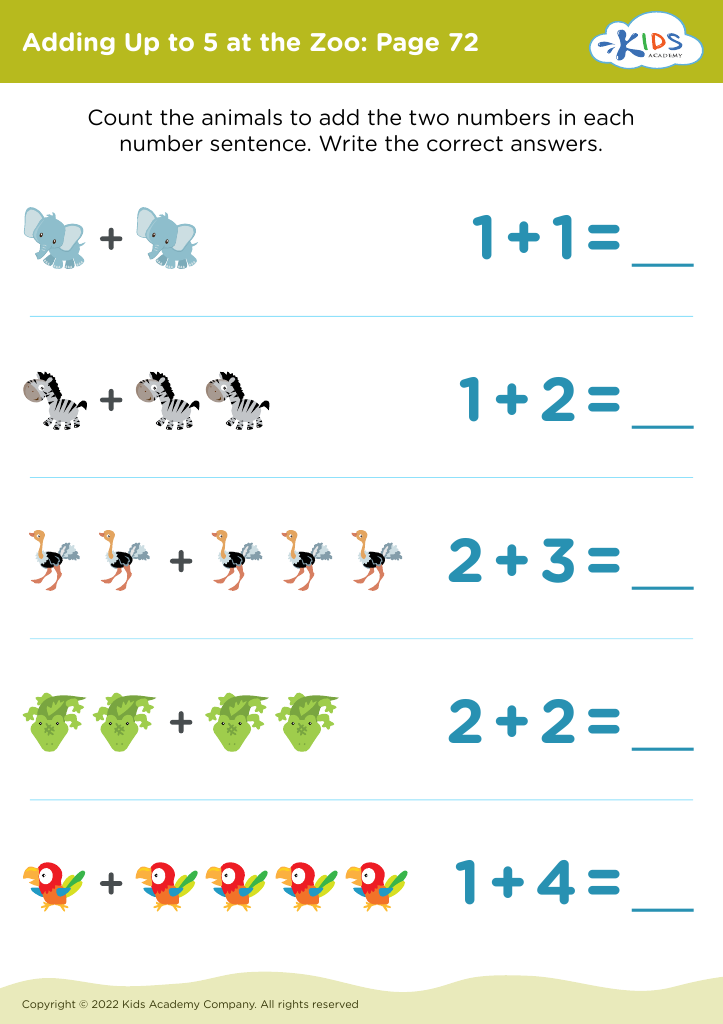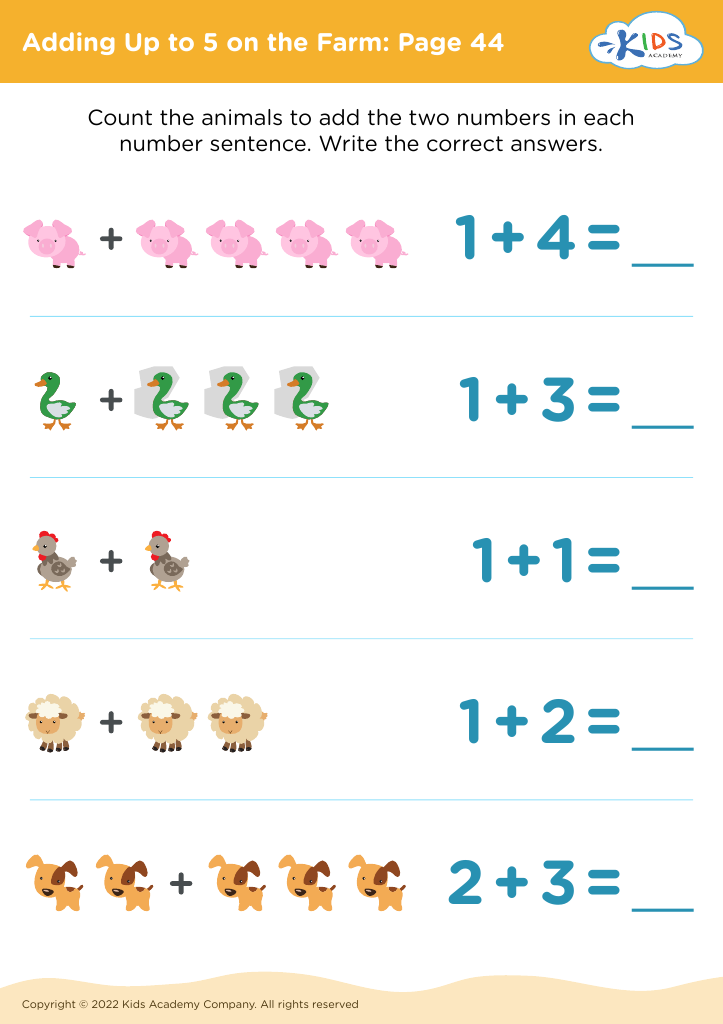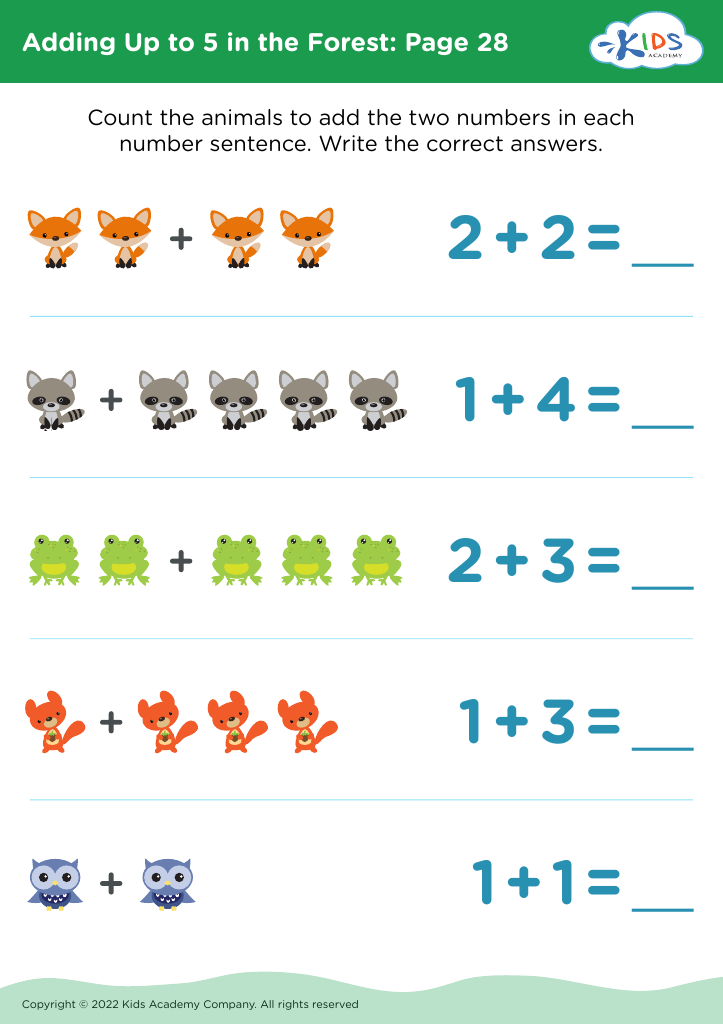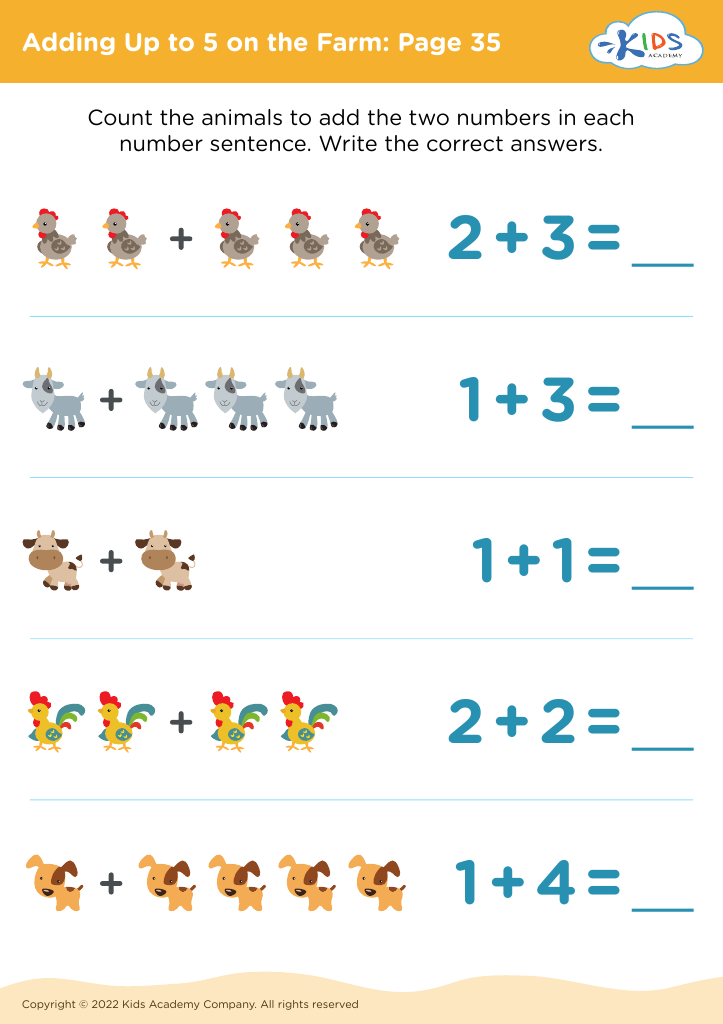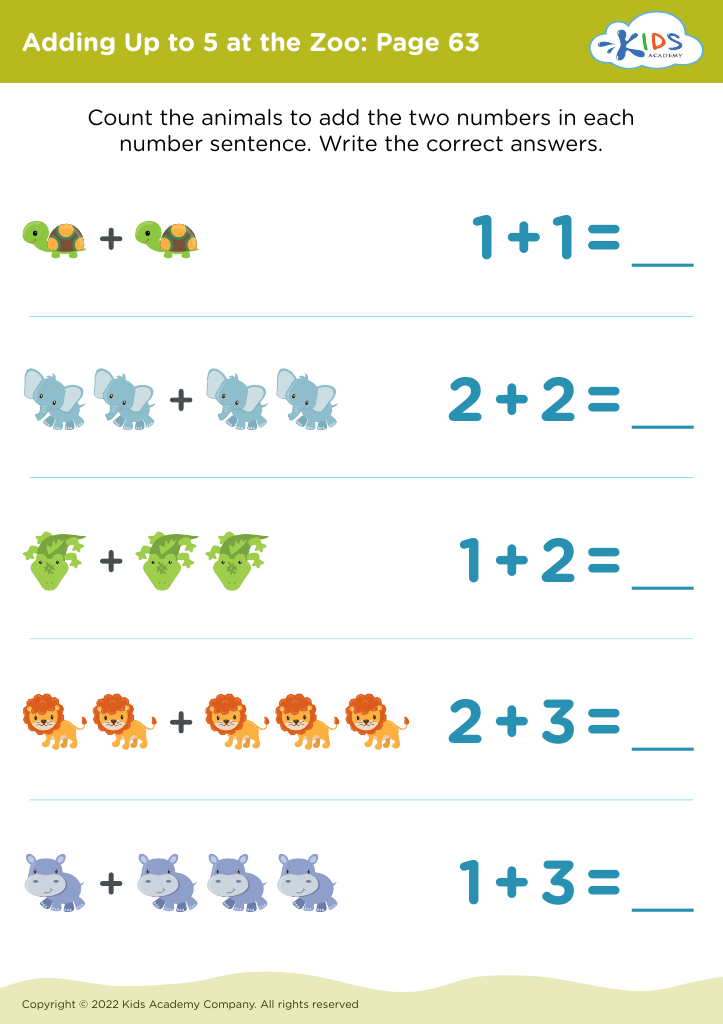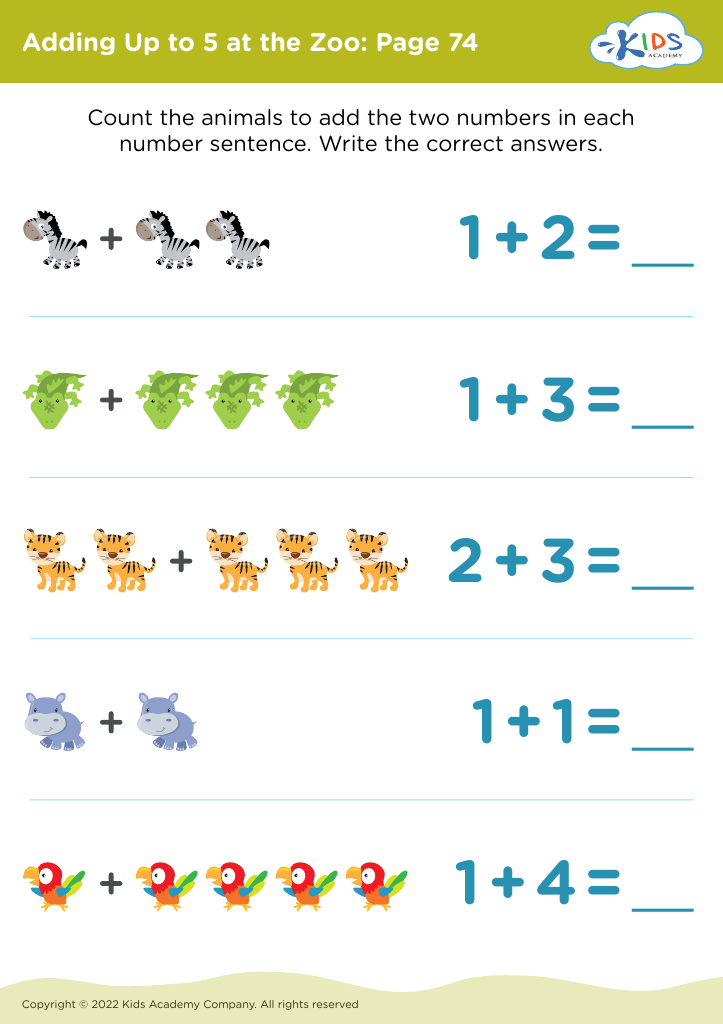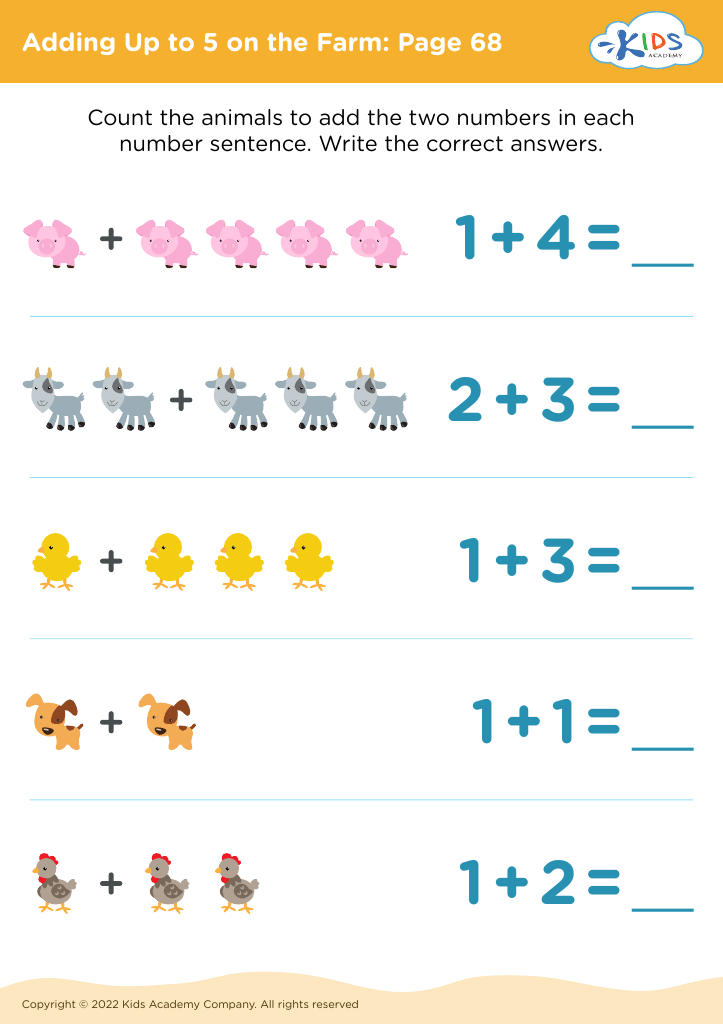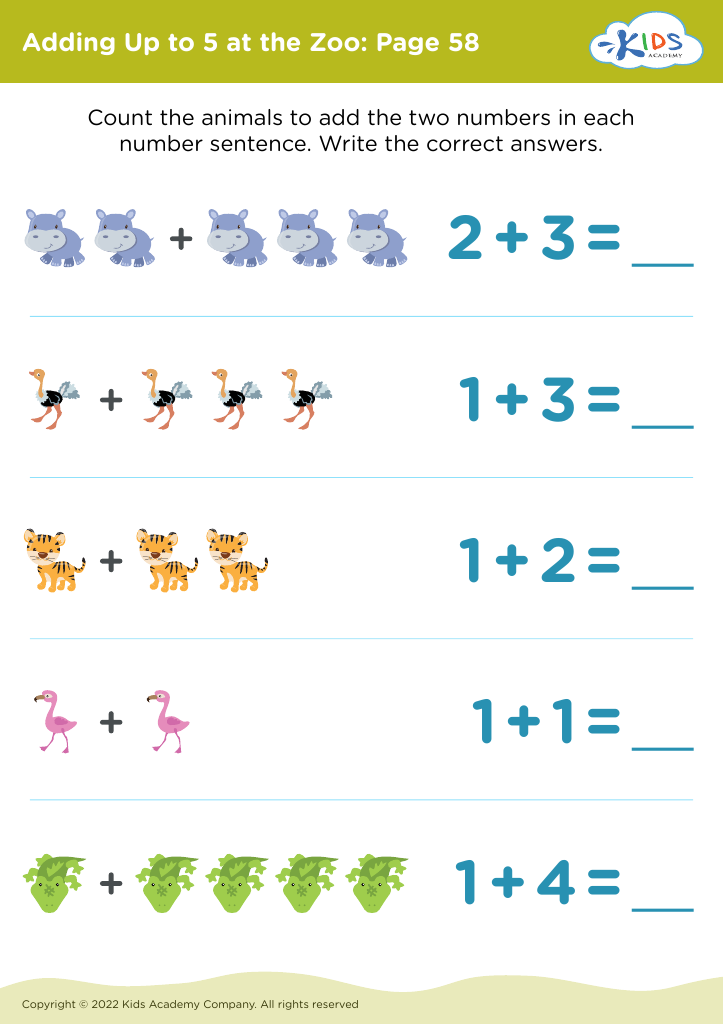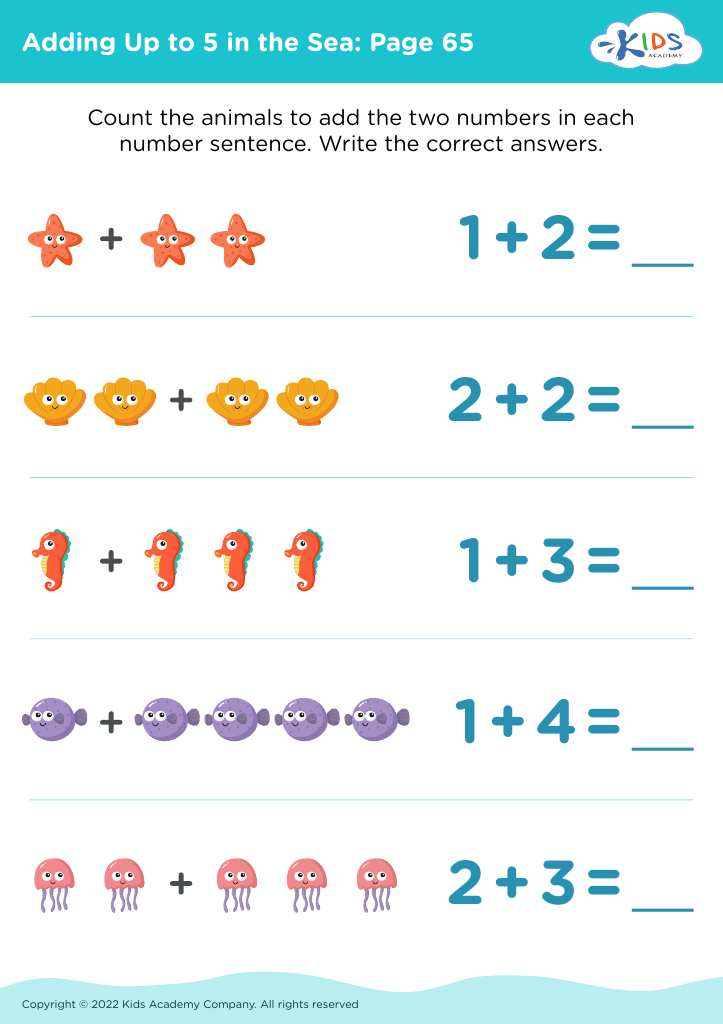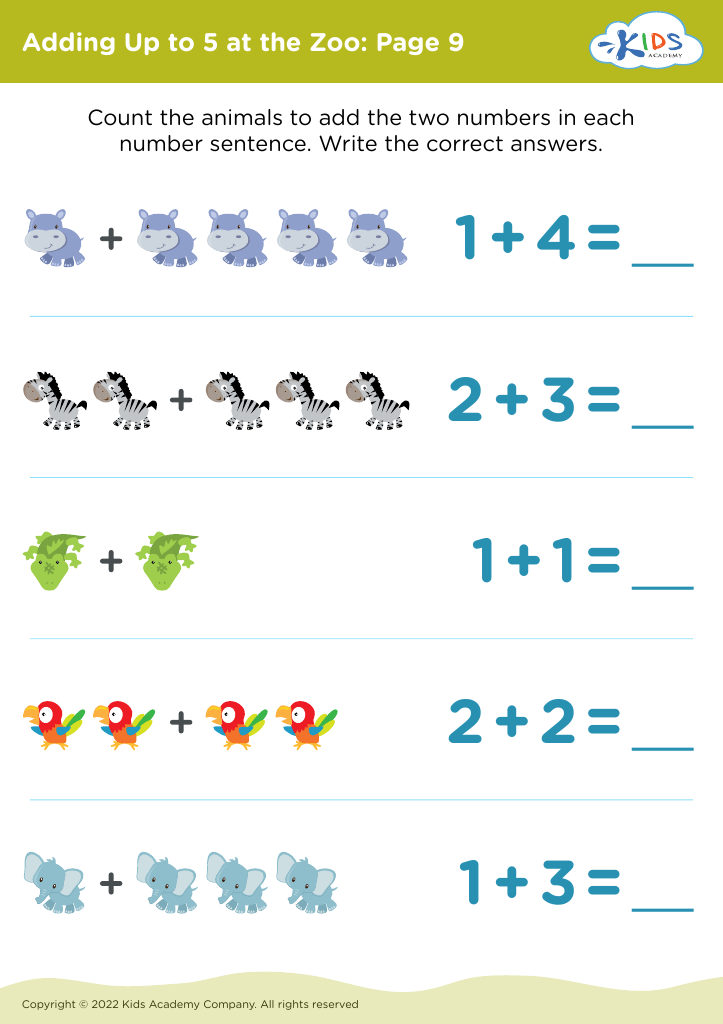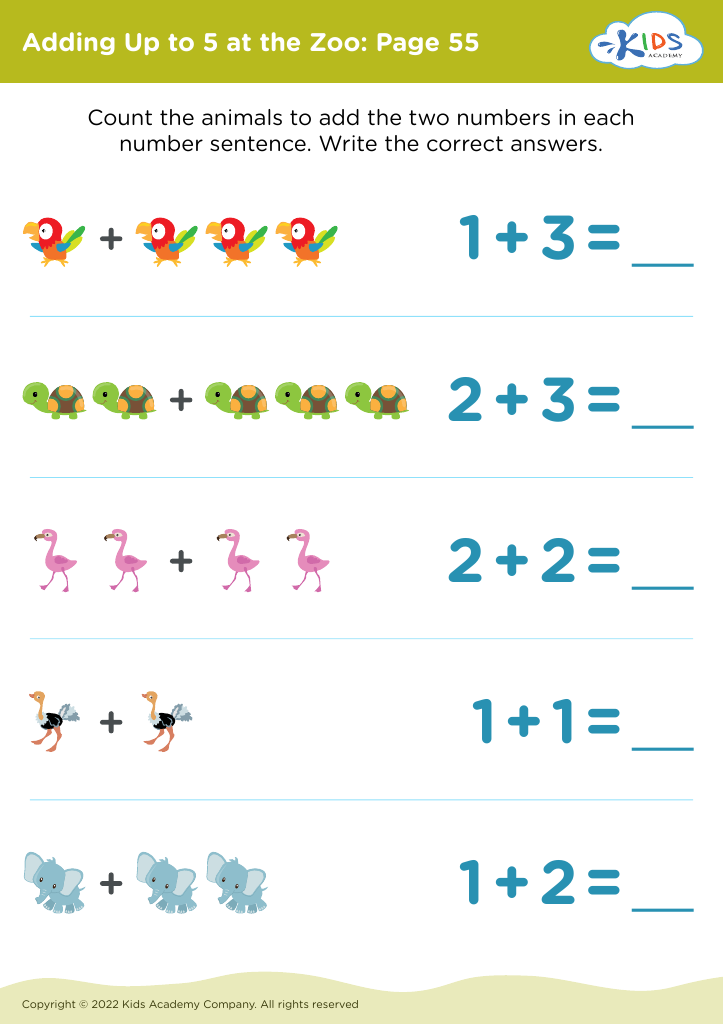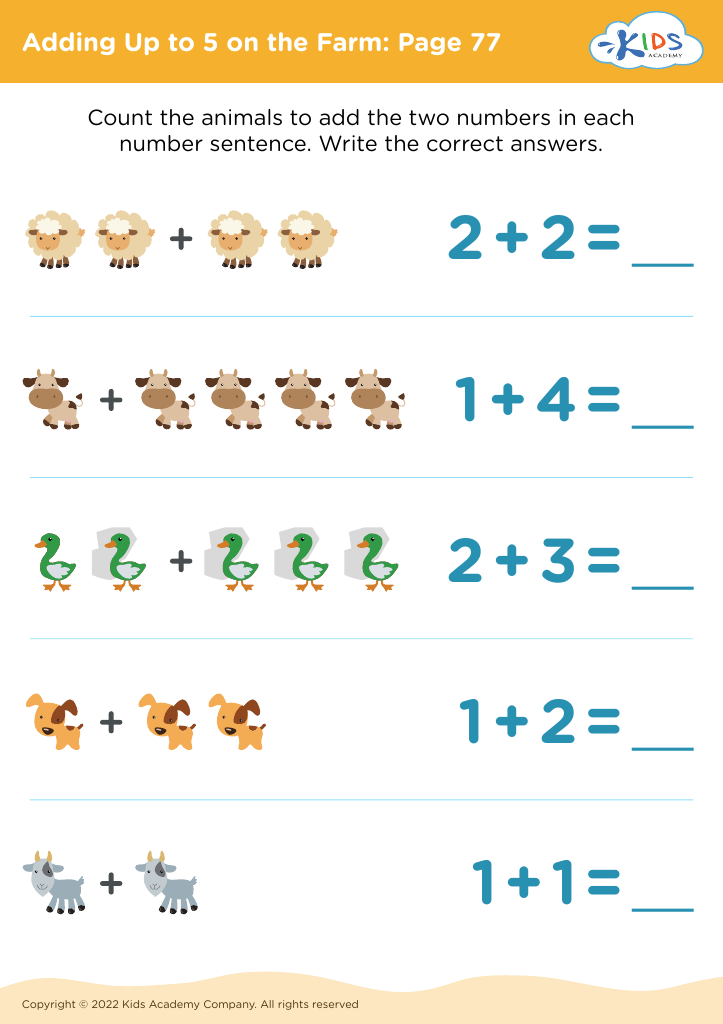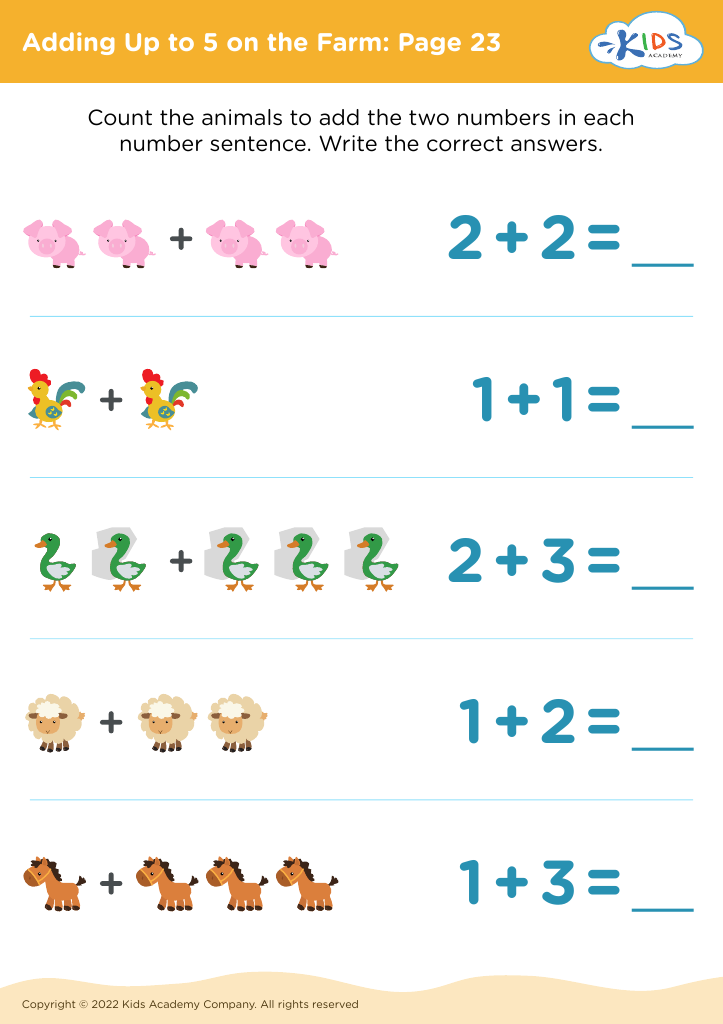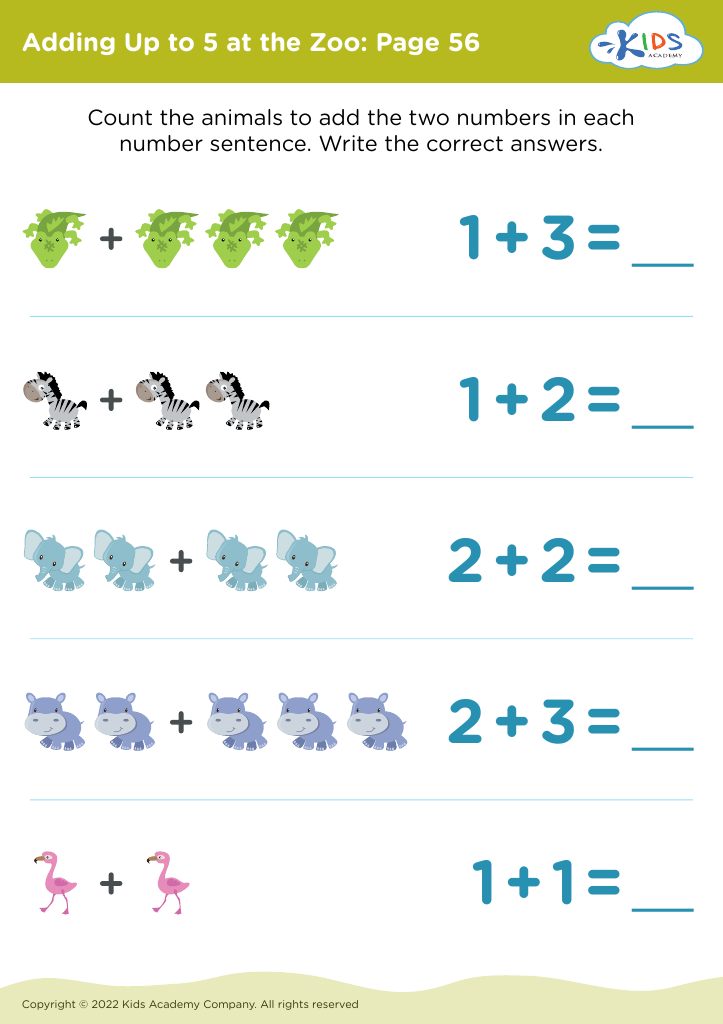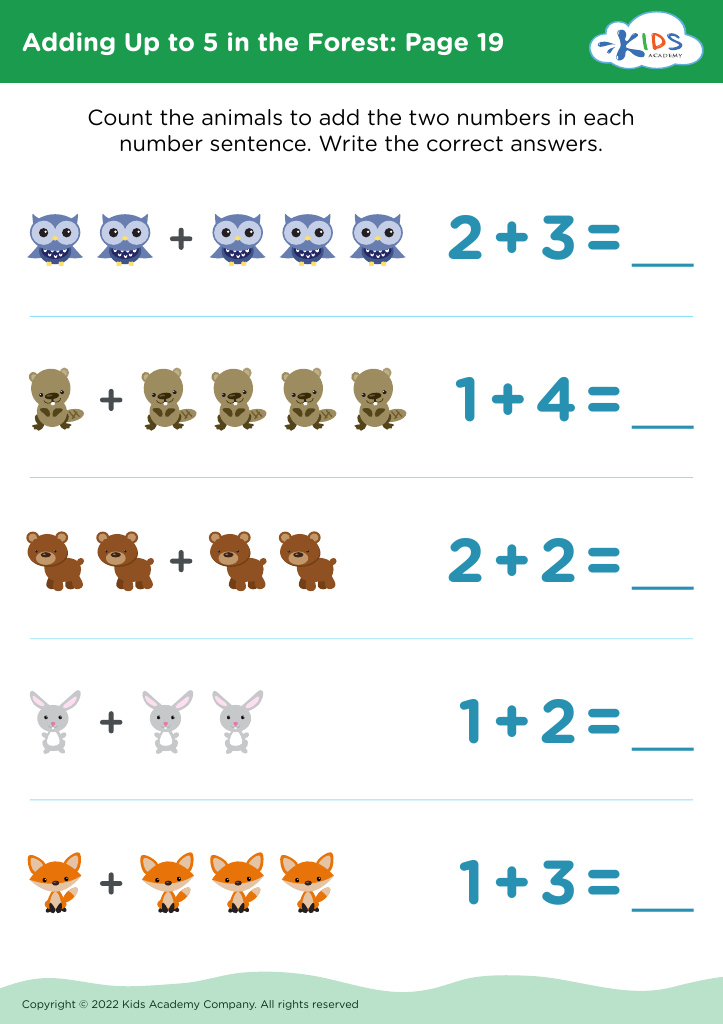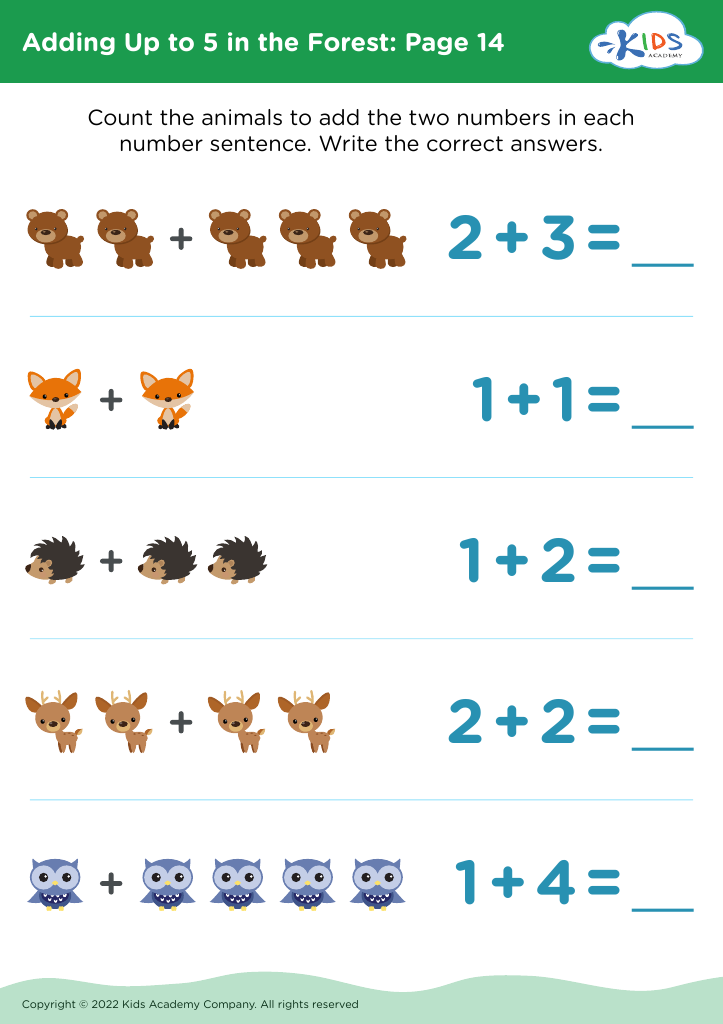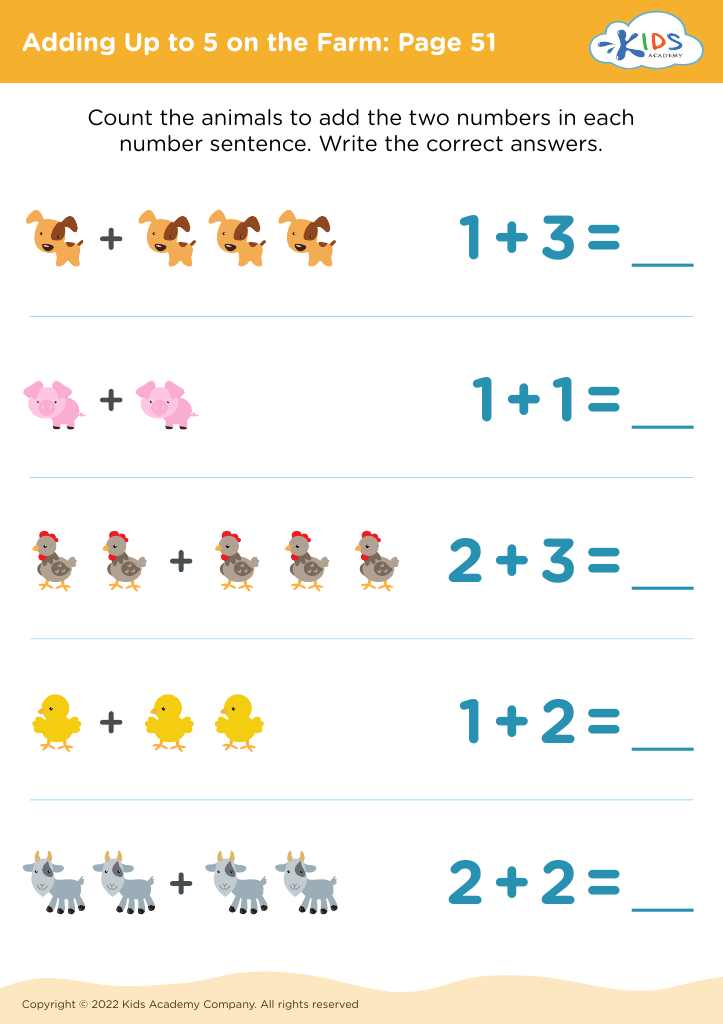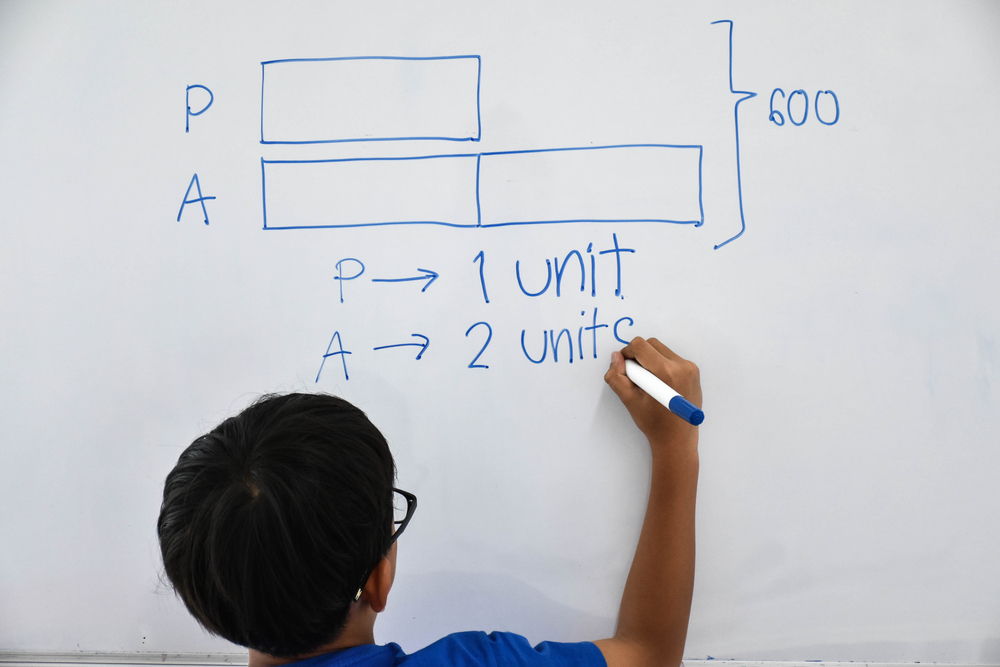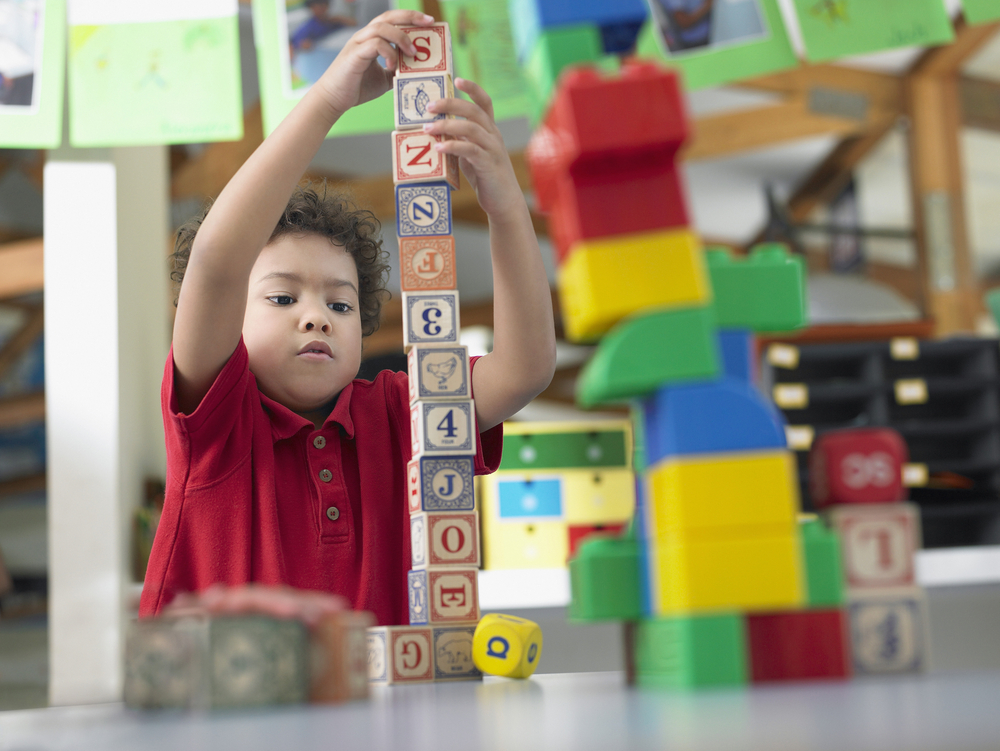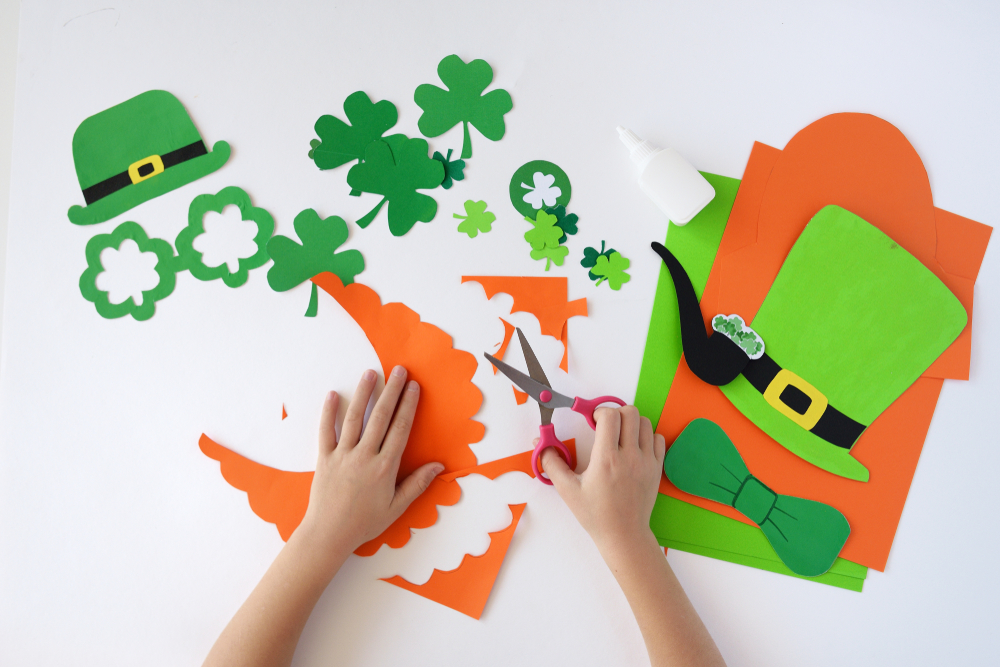Animal recognition Math Worksheets for Ages 5-9 - Page 2
111 filtered results
-
From - To
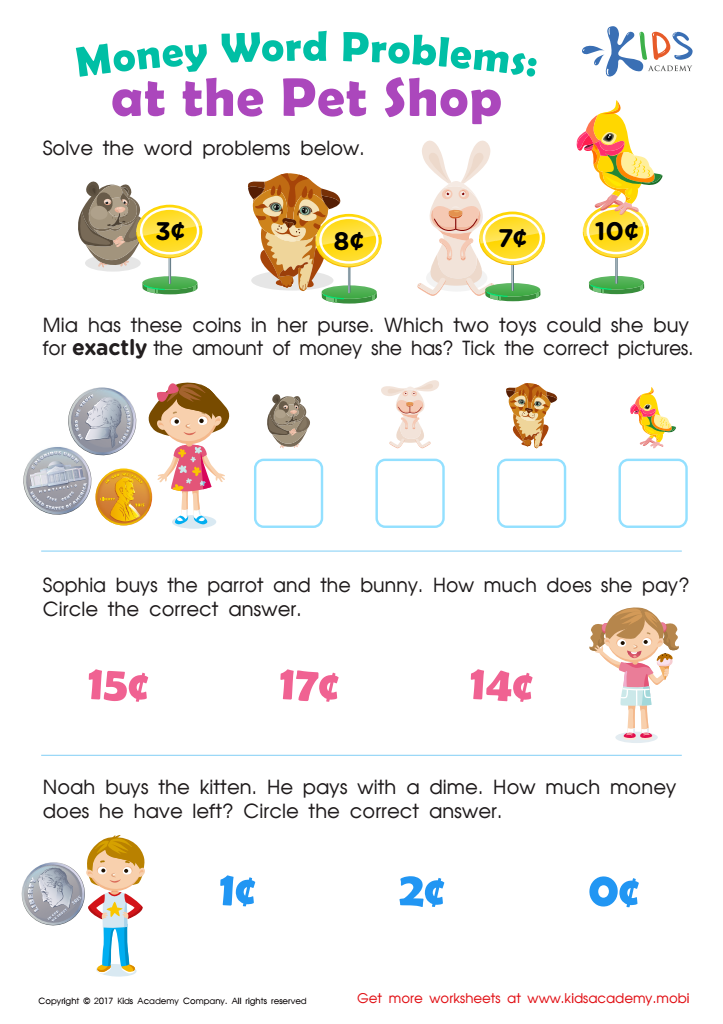

Pet Shop Worksheet
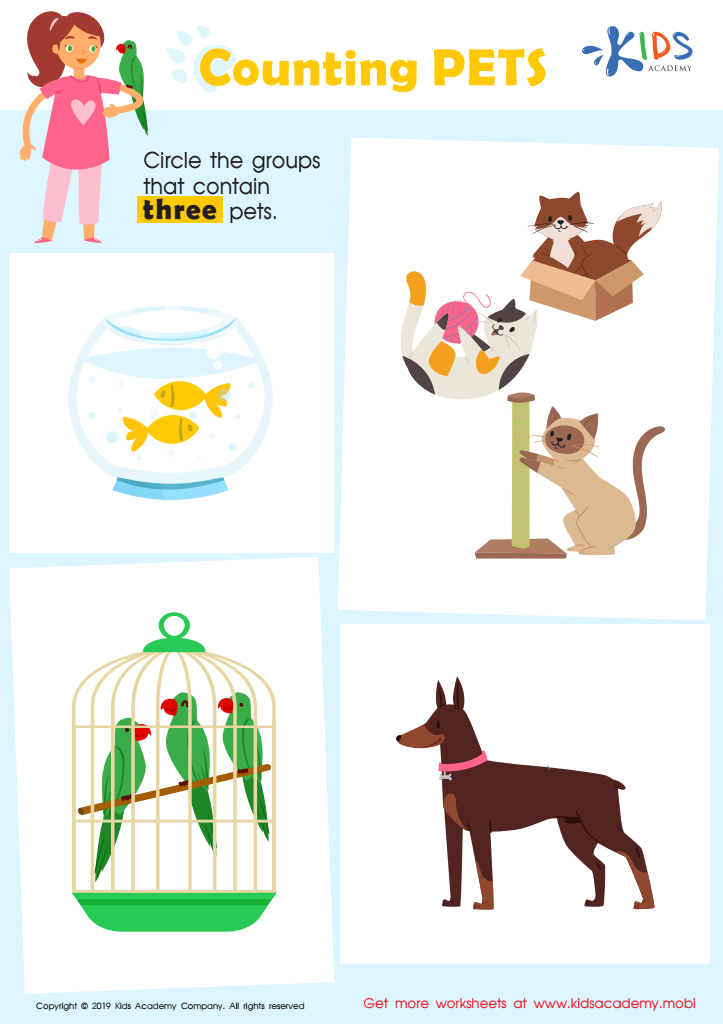

Counting Pets Worksheet


Help the Warthog Count the Grubs Worksheet
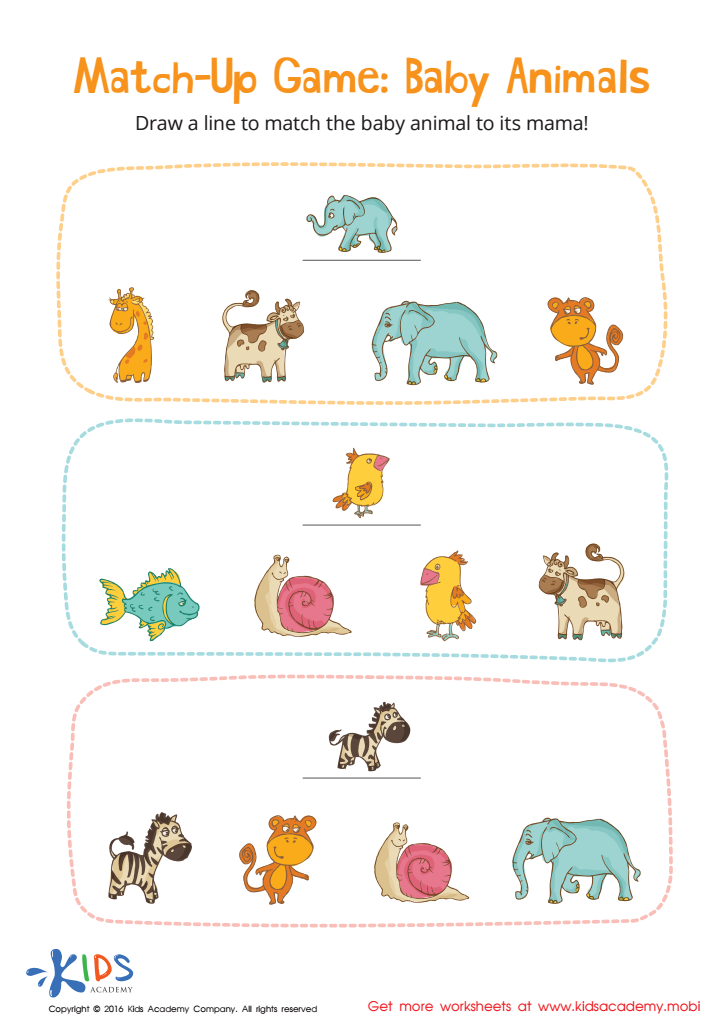

Baby Animals Match-Up Worksheet


Count and Pair on the Farm Worksheet
Animal recognition math, an engaging concept for children aged 5-9, combines math skills with the natural curiosity children have for animals, making learning both fun and memorable. Parents and teachers should care about this educational approach for several compelling reasons.
Firstly, it fosters critical thinking and problem-solving skills. By using animals to teach mathematical concepts like counting, addition, and subtraction, children can visualize these concepts in real-world scenarios. For instance, if a young learner is counting lions in a picture, they not only practice numbers but also develop visual analysis and categorization skills.
Secondly, animal recognition builds vocabulary and engagement. Learning about various animals can spark children's interest, encouraging them to communicate their ideas and ask questions, thereby enhancing their language skills alongside math.
Furthermore, integrating animals into math lessons promotes emotional development. Animals often evoke empathy and excitement, enabling children to form positive associations with learning. This can lead to improved concentration and motivation in subjects they might otherwise find daunting.
Overall, animal recognition math enriches the educational experience, making it holistic, interactive, and beneficial for the cognitive and emotional growth of young learners. Encouraging this approach can lay a foundation for successful learning across multiple areas.
 Assign to My Students
Assign to My Students

